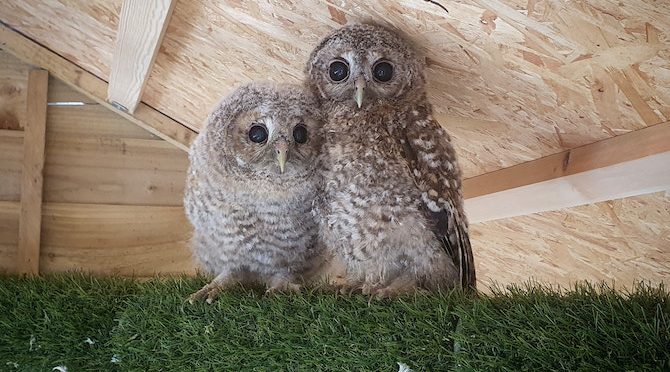[Editor’s note: The following article, by Oxfordshire Wildlife Rescue’s founder Luke Waclawek, highlights just one example of the great work being done by this Woodway Road-based charity. For more information visit https://www.oxfordshirewildliferescue.com]
We have five resident species of owl that can be found living in our countryside: the Barn Owl, Little Owl, Short Eared Owl, Long Eared Owl and the Tawny Owl. Whilst Oxfordshire Wildlife Rescue have seen and cared for all these species, by far our most regular patients are the Tawny Owls. With their beautiful mottled brown feathers and their striking deep and dark eyes, they are captivating, no matter how many we see sadly come into care.
The most common cases are, unfortunately, those that fall victim to our busy roads, usually while feeding on carrion left by earlier collisions. After them come the Tawny Owl orphans, which we start to see coming into the wildlife hospital around the middle of April.Usually, these bundles of helpless ‘fluff’ are at an age where they can (with a little persuasive intervention) generally feed themselves. But this year, we had something a little special – two Tawny owlets spotted at the base of a damaged tree, no more than five days old and each so small that they could both easily fit in the palm of your hand. Upon arrival, both were dehydrated and in shock. After receiving fluids (electrolytes), both were snuggled up together in the parental warmth of one of our incubators. Their rearing proved to be tricky. Being so small (35g each) the frequency of the feeds was very time-consuming. Every three hours, both day and night, for the first two weeks, which is when volunteers who have insomnia suddenly become the charity’s best friend!
By the time the owlets’ eyes opened, we were caring for another nine or so other Tawny owlets who had a little more experience in their natural behaviour, which meant we could introduce our two little ones, who would quickly go on to develop and learn from the other youngsters. Come early autumn, it was time to release our Tawny Owls back into the wild. It’s always a bittersweet moment, but we have done our bit, and the rest is up to them!
Nature is a beautiful thing, and one of the perks to this work is the ability to work closely with species such as the Tawny Owl. Right now, in December, you may hear their famous whistles and twit-woos echoing across our countryside during the dark winter nights. Sometimes I hear them here at the centre, and I do often wonder to myself, ‘could that be one of our Tawny Owl youngsters from this year?’ Perhaps, they are just letting us know they are doing well, back in their natural habitat, where they belong.

